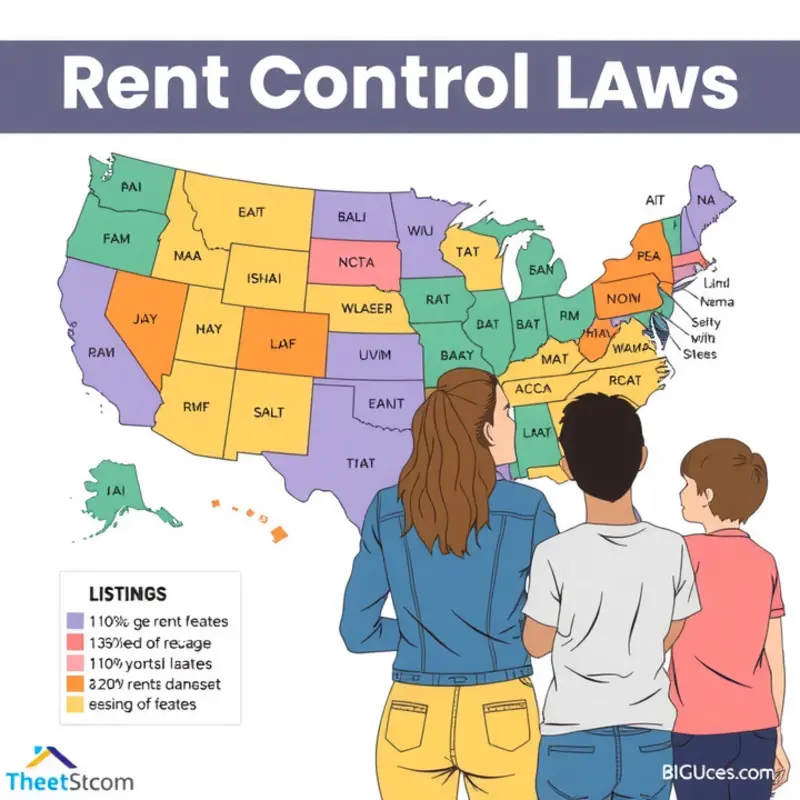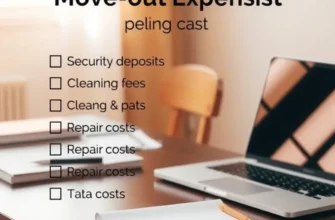Renting your first apartment or home can be both exciting and daunting. As young professionals, students, couples, or families, securing a lease comes with many questions, especially concerning costs. One specific issue of concern is rent increases. Knowing the limitations imposed by local and state laws can help you budget effectively and avoid unexpected financial burdens. Across the United States, rent control laws vary significantly, leaving tenants needing clarity and guidance. Understanding these laws can empower you to make informed decisions, protect your financial future, and navigate your leasing journey with confidence. In this guide, we will explore the limitations on rent increases in various states. We will delve into what these regulations mean for you, how you can advocate for your rights as a tenant, and ultimately encourage a stress-free renting experience.
Understanding Rent Control: The Basics

Rent control is a regulatory measure designed to cap the rent landlords can charge tenants, aiming to ensure affordable housing. Originally stemming from the urban housing shortages during World War I, rent control gained popularity in response to post-war housing shortages and inflationary pressures in the 1970s.
Rent control’s purpose is to protect tenants from rapid rent increases that may not align with wage growth or overall economic conditions. It seeks to maintain stable communities by minimizing tenant displacement due to unaffordable rent hikes. By doing so, it balances the landlord’s ability to receive a fair return on their property with the tenant’s ability to sustain their housing.
The application of rent control laws varies significantly across states. In states like California, rent control laws, such as the Costa-Hawkins Rental Housing Act, allow local municipalities to enforce their rent cap policies, typically on older buildings. However, new constructions are often exempt, encouraging investment in the housing market.
New York offers a different approach. Rent control there is part of a broader regulatory framework including rent stabilization, which sets guidelines for both rent increases and tenant evictions. This combination is intended to offer more comprehensive tenant protections.
Conversely, many states have preemptive laws prohibiting local rent control ordinances. For example, in Illinois, statewide legislation bans municipalities from establishing their own rent control laws, aiming to foster a free market approach to housing.
For tenants, understanding these nuances can be pivotal. Those residing in rent-controlled units often benefit from knowing their specific rights, which can vary widely depending on the state and local regulations. Tenants are encouraged to investigate their local tenant rights groups or housing authorities to comprehend fully the rent control laws applicable in their area.
A deep dive into the intricacies of rent control can considerably improve a tenant’s ability to make informed decisions when navigating potential rent increases. Even for those living in states without rent control, awareness of the historical and economic context driving these measures can provide valuable insights into broader housing and rental market dynamics.
Consider exploring more about rights and tenant protections by visiting this guide on renter’s rights and heating issues.
State-Specific Rent Increase Limits

Understanding rent increase limitations across the United States is crucial for tenants hoping to manage their budgets effectively amidst a fluctuating rental market. Let’s dive into the specifics for states like California, New York, and Texas, which present unique regulatory climates that tenants need to navigate.
California is known for its robust tenant-protection laws, particularly under the California Tenant Protection Act of 2019. This law, effective from January 1, 2020, limits annual rent increases to 5% plus the local rate of inflation, not exceeding a total of 10%. This legislation applies to most residential rental properties, except those built in the past 15 years or single-family homes not owned by corporations. Tenants in California should always confirm their building’s specific housing status to determine applicable laws.
Moving eastward, New York presents another layer of complexity with its own rent stabilization and control laws, especially in New York City. Rent increases for rent-stabilized apartments are determined yearly by the Rent Guidelines Board, influenced by market factors and inflation. For example, from October 2022 to September 2023, the increase was capped at 3.25% for one-year leases and around 5% for two-year leases. Tenants in non-stabilized apartments have fewer legal protections, making it essential for renters to be aware of the classification of their housing. Also worth mentioning is this guide on understanding rental specifics in New York’s neighborhoods.
In Texas, the situation is markedly different, as the state currently does not impose rent control measures. Landlords are generally free to increase rent as market forces dictate, provided they abide by lease agreements and give proper notice, typically 30 days, unless specified otherwise. While this offers flexibility to landlords, it highlights the importance for renters to negotiate lease terms and potentially seek fixed-rate leases where feasible to mitigate unanticipated hikes.
A few tips for renters across these regions include maintaining open lines of communication with landlords, understanding local tenant rights, and tracking legislations. It is also beneficial to compare rents in surrounding areas periodically to have leverage in negotiations.
Monitoring these regulations can sometimes be overwhelming; thus, utilizing local tenant unions or advocacy groups for up-to-date information can be advantageous. This chapter underscores the need for informed decision-making by renters navigating varied and evolving rent laws. Understanding the legislation in place and being proactive in negotiations form the cornerstone of financial management in a rental context.
Final words
Understanding the limitations on rent increases in your state is a vital step in navigating your rental experience. As you budget and plan, being aware of your rights as a tenant can help you advocate for yourself effectively. Remember that knowledge is power, and the more informed you are about rent control laws, the less stressful your renting experience will be. Lease wisely, be aware of your rights, and take control of your financial stability!









